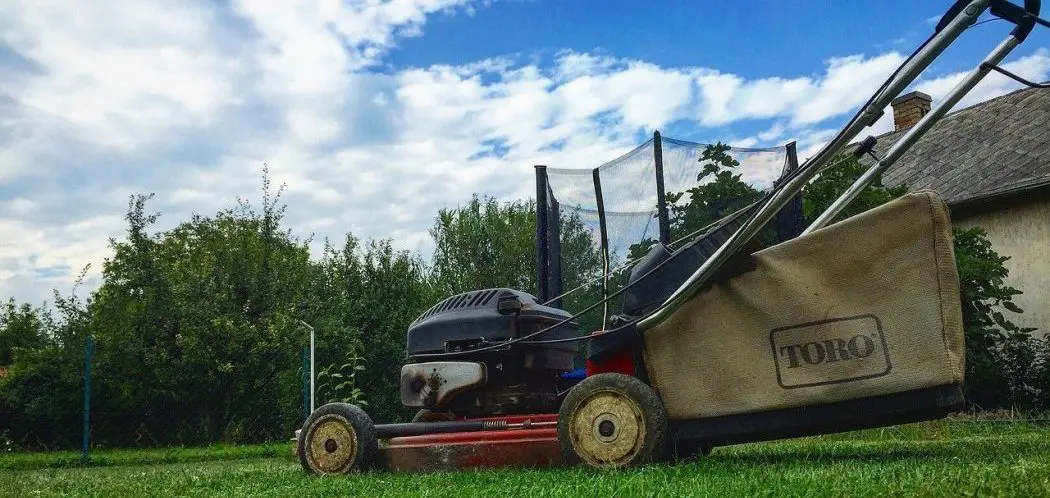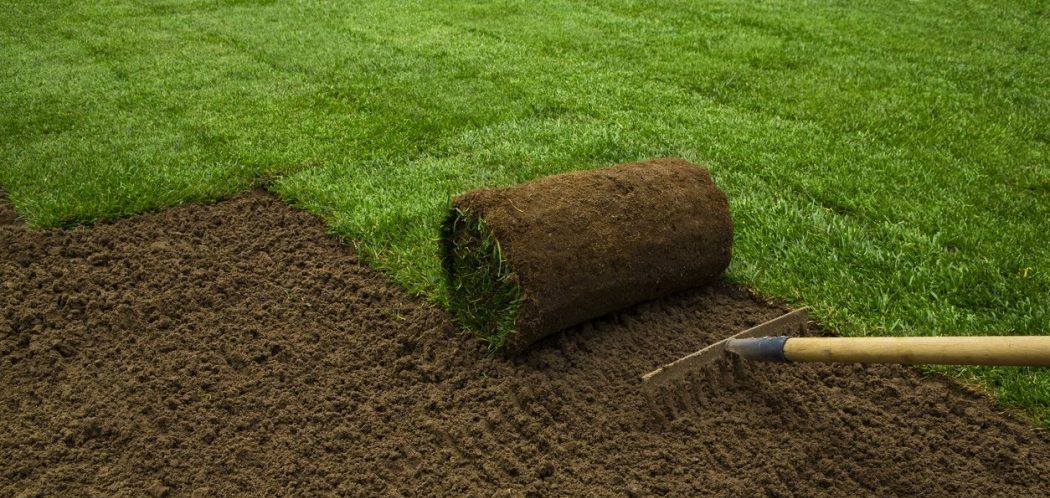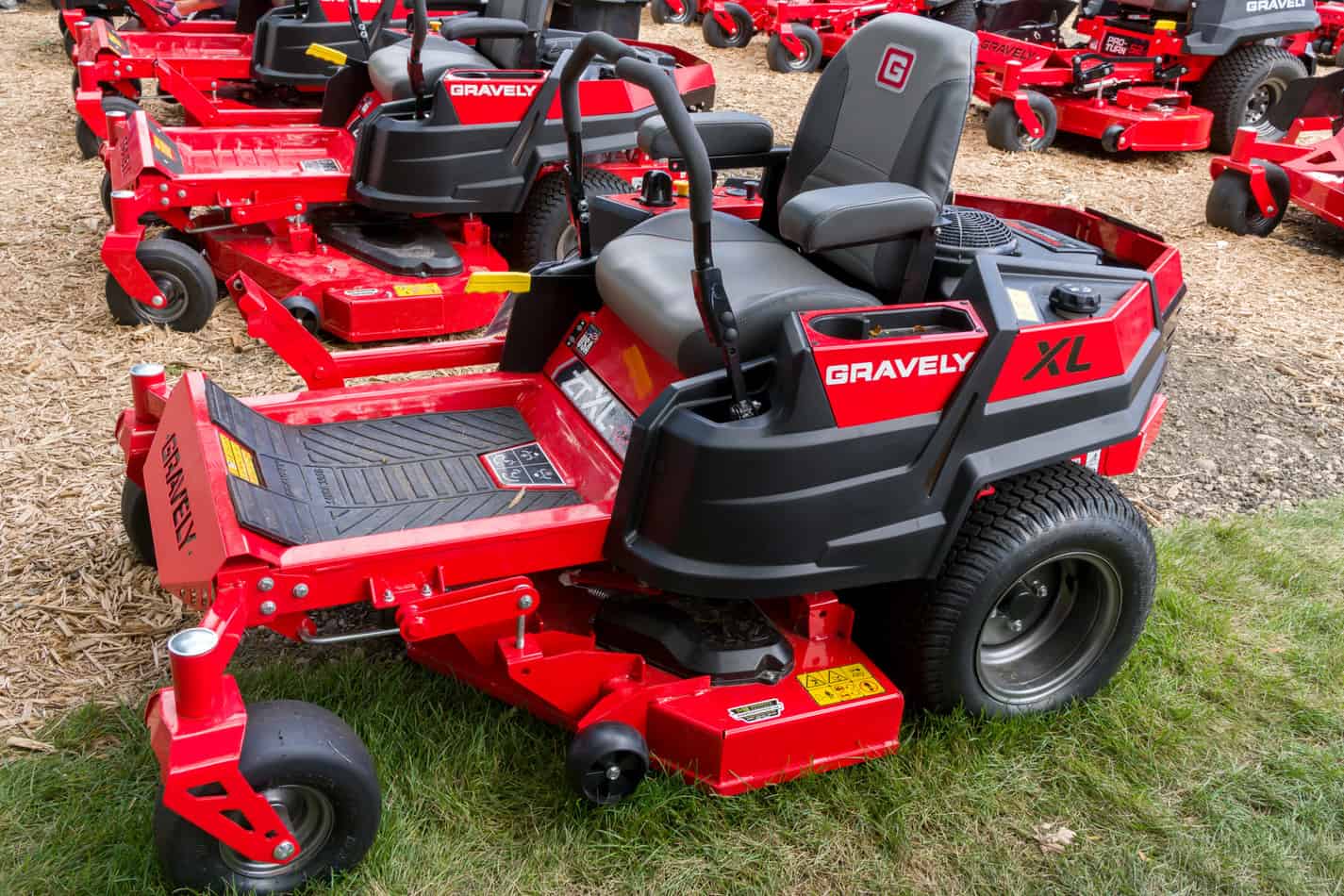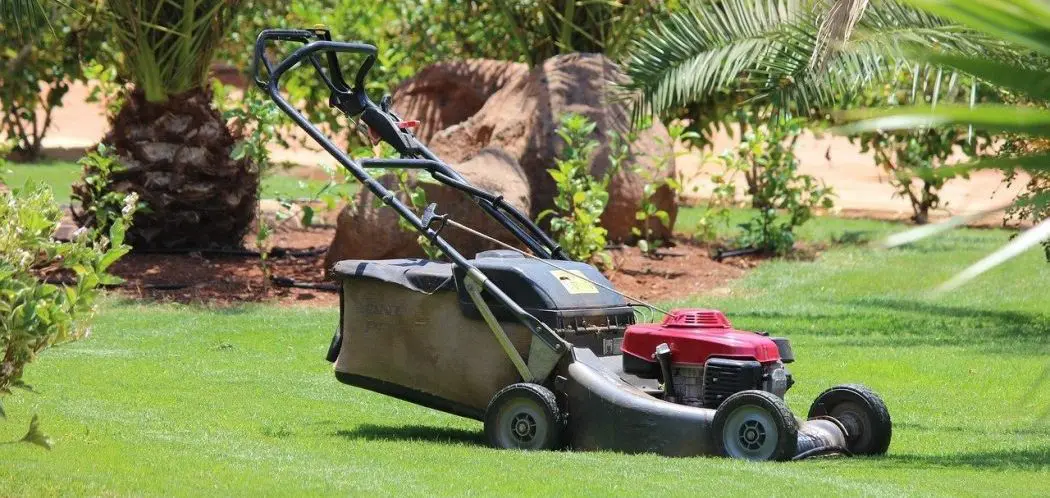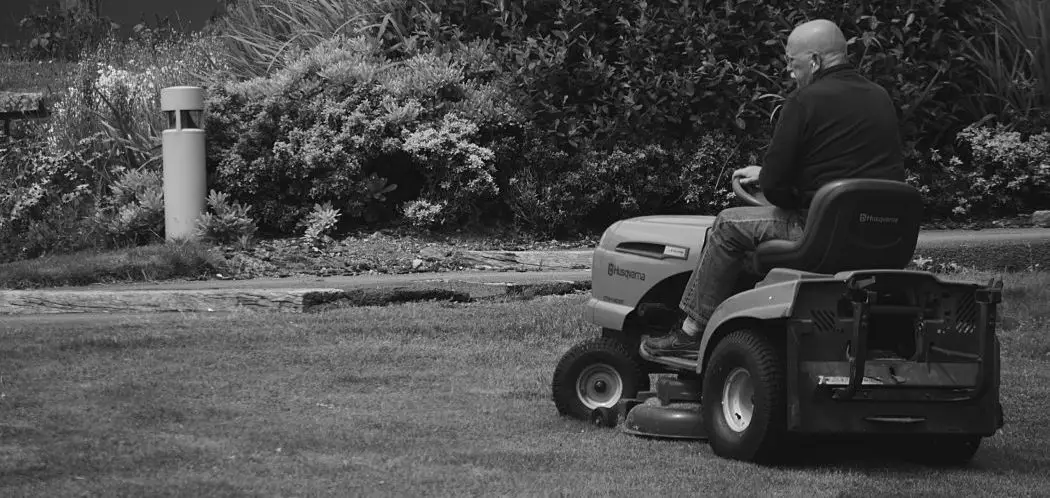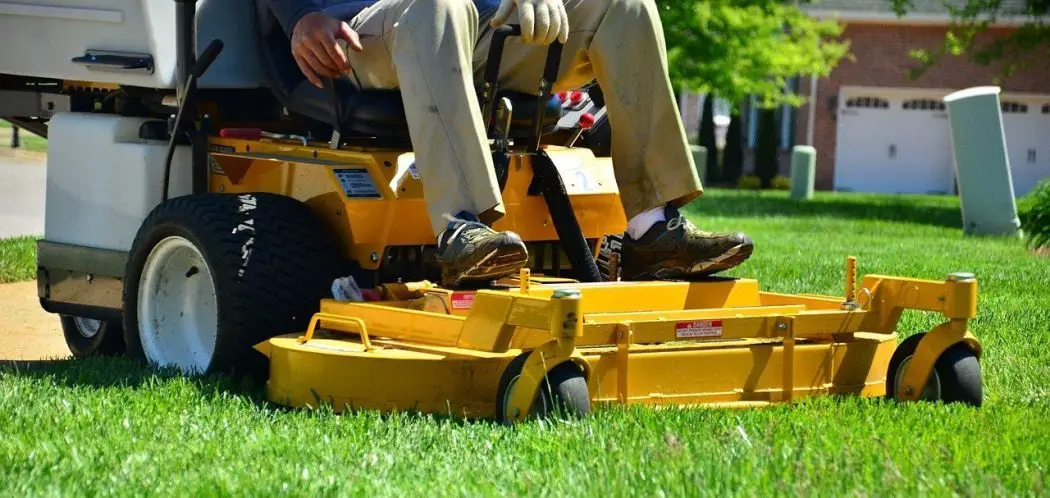So… you need a new lawn mower.
The time has come to replace your trusty mower or perhaps you’re buying your very first lawn mower.
Choosing the right lawn mower can seem a little confusing at first. You’re probably looking at different mowers on the market wondering which products are suitable for your situation. There’s such a wide selection of mowers that have many different features. It can be difficult to decide what to buy.
In this article, I’m not going to tell you which brand or model to purchase. Instead, I’m going to provide some helpful information to help you decide what type of mower you should purchase to meet your needs and your budget.
Remember that a good lawn mower doesn’t have to be super fancy or expensive. It just needs to be reliable, good value for money and match the requirements of the job it needs to do.
Things to consider…
Before we look at the different types of mowers available, let’s look at some of the things that can influence your decision.
How big is your lawn?
The size of your lawn is probably one of the most important factors to consider when buying a lawn mower.
Obviously, the larger your yard, the longer it’s going to take to cut the grass.
While some people love mowing the lawn, most people don’t want to be spending so much time than it becomes a chore rather than something you enjoy.
It’s a good idea to pick a lawn mower that’s going to be somewhat time efficient.
Remember that mowing the lawn isn’t the only part of lawn care. If you want a great looking lawn, you’re going to need to spend time on other aspects like edging and weed whacking too.
Make sure cutting the grass isn’t taking up too much of your time, even if you love doing it.
As a general rule, the large your lawn is, the larger mower you’ll want to choose – obvious right?
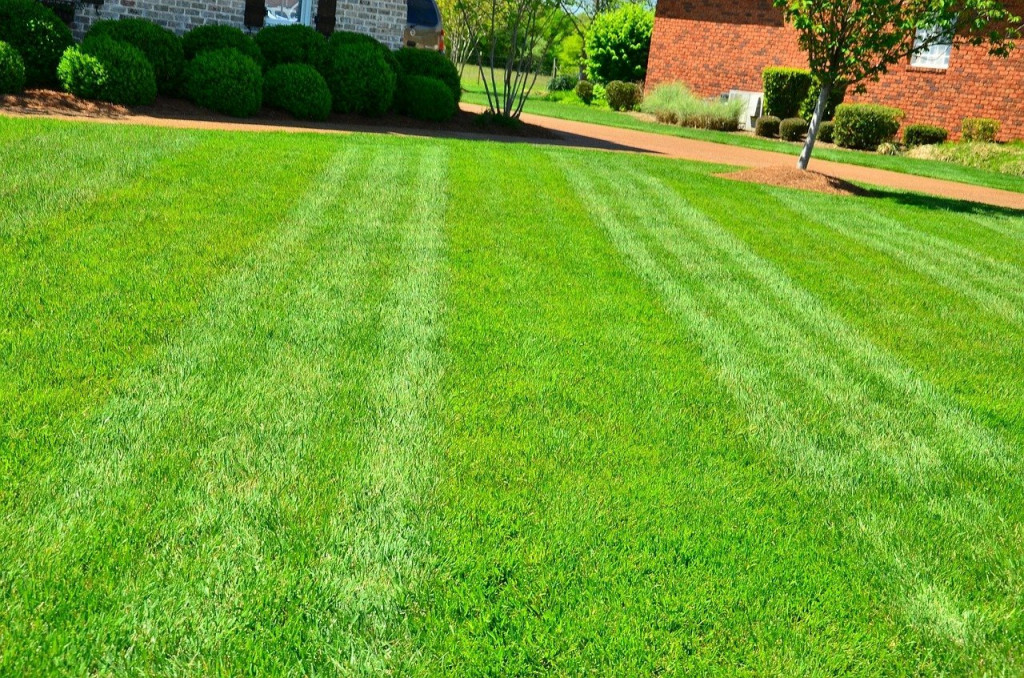
What is your budget?
Of course, this is one of the most important things to factor in.
The price range can vary a lot by brand and the model you choose. Your bog-standard gas-powered mower might set you back $100 or so, while the top of the range zero-turn mower can cost thousands.
A quality lawn mower can last you up to ten years. You want to make sure you’re getting something that can do everything you need it do while being durable too.
If you’re really into lawn care, you’re going to be mowing regularly so don’t try and sacrifice quality. A good mower doesn’t need to break the bank, although cost and quality are at least somewhat related.
What size engine do you need?
Size matters! The size of the mower’s engine that is.
If you want to get the most consistent cut across longer grass, you’re going to need a mower with a more powerful engine.
A lager motor is also better at cutting through wet grass
The downside of a large engine is that it’s going to be more expensive.
What size deck do you need?
The cutting width of your mower is an important consideration.
A wider deck means that you can cut the grass faster although this maybe unsuitable if you have a smaller sized lawn.
You might have some hard to reach areas in your yard in which case you may be better off with a smaller deck size.
Keep manoeuvrability and storage in mind too!
You also have a choice of deck material. Steel is the standard option, but it’s also the heaviest and it’s prone to rust.
Plastic is a nice choice too. It won’t corrode, it’s lightweight but it is the least durable.
Plastic is used for electric mowers. In some cases, these are light enough to be stored on a wall.
A composite deck is the most expensive option but it’s also the sturdiest and it won’t rust.
Are you able to use the mower easily?
You need to be able to start the mower easily! Sounds obvious right but it does matter.
There’s the traditional pull or cord start which you’ll need to provide some muscle to get the engine to turn over.
The other starter option is a key or a push start. These are more common on riding mowers, but some push mowers have a push start option too.
Are you able to properly store the mower?
Before you purchase a mower, you need to consider your storage options. You might need to store the mower in a garage which will require some room.
A lot of walk-behind mowers have foldable handles so that you can place them in a convenient spot.
Obviously, ride on mowers require much more storage space than a standard push mower.
Does the brand matter to you?
Getting a good brand is somewhat important. There are certainly some brands known for being more reliable and easier to repair when things go wrong. Some of my favorite brands are:
- Honda
- Ego
- Toro
- John Deere
- Snapper
Don’t feel you have to purchase from one of these companies, however I would recommend staying within reputable brand names. In general, they are less likely to cause you problems and you know you can get them fixed if things go wrong.
Should you buy a gas or battery powered mower?
One important consideration is whether you want to use a gas or electric mower. They both have advantages and disadvantages over each other.
Gas mowers are pricier to run and they have higher maintenance costs too. They are much noisier but gas mowers are way better for larger lawns.
Electric models are great for quarter acre or less.
How do you want to handle your grass clippings?
What you want to do with your grass clippings is something you also need to decide.
Whether you decide to mulch, bag or side discharge, this can have a huge impact on the look and health of your grass.
I’d recommend getting a mower that has all three options!
Although I’d recommend mulching your clippings for most of your mows, you’ll want to have the option of side discharge or bagging too.
Bagging
This is where the clippings and other debris you run over fly off into a bag attached to the mower.
It’s great of you have a lawn full of weeds so that you don’t spread the seeds back into your yard.
Bagging gives a great cut because most of the lawn mower’s power goes to spinning the blade.
It works great if you have a lot of leaves to clear up in the fall, or your lawn has a disease.
The downside is that you’ll finish up with a bag full of grass clippings and anything else that comes off the lawn. You’re going to have get rid of this somehow which can be annoying if you can’t find a good place to dump them.
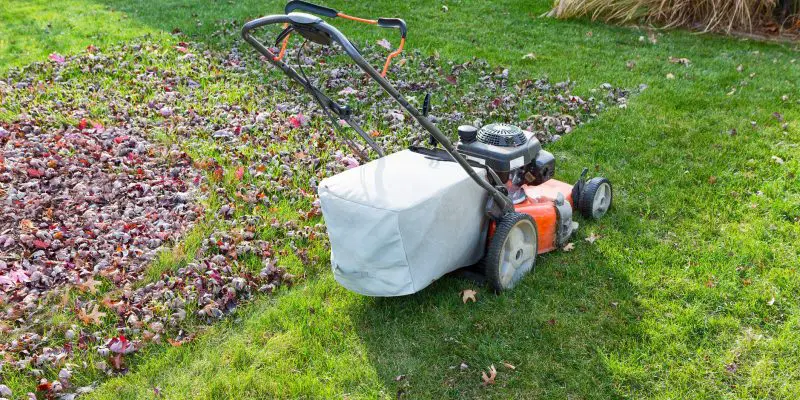
Side discharge
This was previously the way that everyone cut their lawn.
The power and cut quality are great with side-discharge. The increased vacuum ability increases your speed. Blasting the clippings out of the side can help you cut your grass much faster.
The downside of using side discharge is that you’re left with lines of clippings on your lawn afterwards. Also, these clippings can get everywhere and make a complete mess if you aren’t careful.
It’s probably not a great option if you’ve got a smaller lawn.

Mulching
While mulching can have some benefits, a lot of of people mulch incorrectly and this can cause too much thatch build up.
When you mulch, your mower finely chops up the clippings and releases them back into the lawn which adds nutrients. Think of it as a natural fertilizer for your lawn.
Another one of the obvious benefits of mulching is that you don’t have to bother removing the grass clippings afterwards.
What will you do with your lawn mower?
You’ll need to consider what you’re going to be using your mower for.
If you’re starting up a lawn care business and efficiency is your highest priority, you’ll most likely want to splash out on a zero turn mower. On the other hand, if you’re just cutting your own lawn, you probably don’t want to spend as much.
You want to purchase something that is fit for purpose and you’re getting the maximum use out of.
Can you properly maintain it?
All mowers do require some maintenance. Unless you’re using a battery powered mower, you’re going to change the oil every once in a while. You’re also going to have to replace the air filter and the blades every so often.
While some level of maintenance should be expected on pretty much any lawn mower, try and find one with lower maintenance needs. The last thing you want is to hit by down time or unexpected bills for repairs.

Types of lawn mowers
Walk behind mowers
These are the most common mower to see in the US.
They work best for small to medium sized lawns.
Push mowers
If you have under a half acre or so, a basic push mower can work just fine.
They are low cost, easy to use.
The mower supplies power to the blades but you still have to push it across your lawn.
Self-propelled mowers
If you have a medium sized lawn, you might want to step up to a self-propelled mower.
With a self-propelled mower, the engine drives the wheels too, so it’s a lot less exhausting than using a push mower.
They are a little more expensive than push mowers, but you do get some more options.
They break down into two categories:
- Hydrostatic
- Transmission
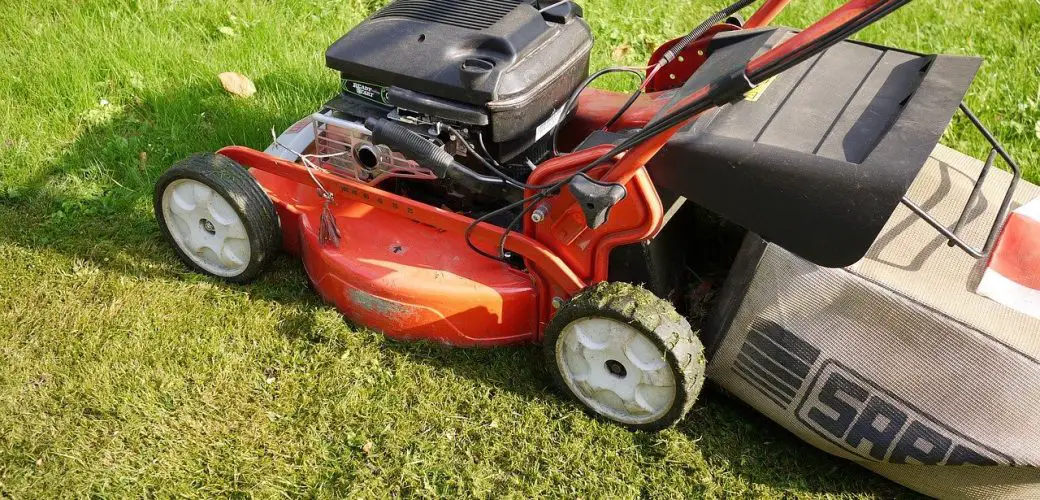
Drive type
 Lawn mowers are available in:
Lawn mowers are available in:
- Rear wheel
- Front wheel
- All wheel drive
There are benefits and drawbacks to each.
If you’ve got hills in your yard, you might be better off choosing an all-wheel drive mower. These deliver better traction on hills and when cutting taller grass although they do tend to cost more.
Front wheel drive mowers are great for level ground. You can cut the grass super-fast because you can turn without slowing down too much. They’re also the cheapest option. Front wheel drive mowers aren’t good on hills; the front wheels lift up easily making it hard to gain traction.
With rear wheel drive mowers, you’re getting the best of both worlds. The drive wheels tend to stay engaged around turns and on bumps. They’re suited to a variety of terrains and it’s what i’d recommend for most people.
Reel mowers
A reel mower can certainly set your lawn apart from others. A reel mower is sometimes referred to as a cylinder mower.
For fine-leafed flat growing grass, a reel mower gives an excellent cut. It’s the best way to get a nice cut below two inches.
Manual reel mowers
Instead of having a single blade, a manual reel mower has a series of curved blades that cut the grass.
Most manual reel mowers are relatively inexpensive, quiet, easy to maintain and they work well for small areas of grass.
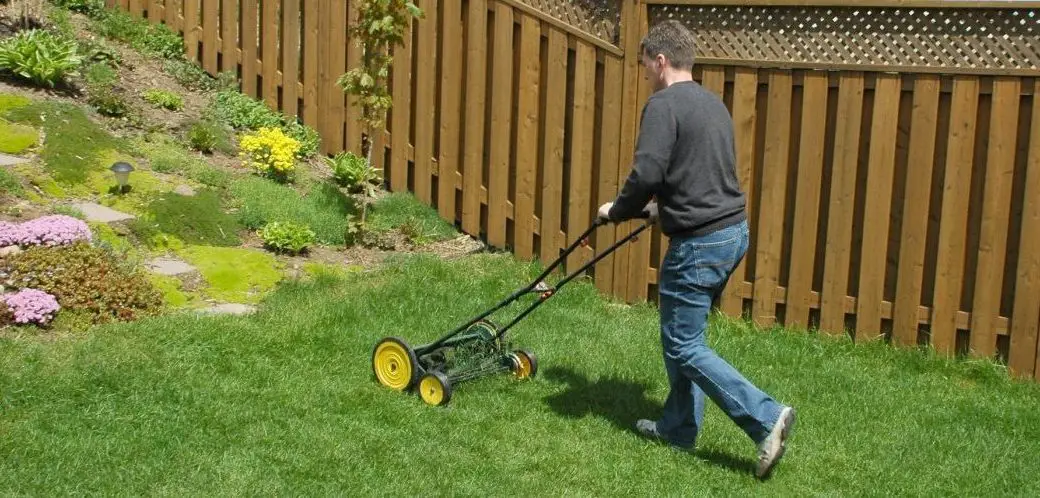
Self-propelled reel mowers
Reel mowers typically have rollers built in too to give your beautiful lawn stripes.
These are commonly used on golf greens for precision mowing.
The downside of self-propelled reel mowers is the cost. They can be far more expensive than a traditional lawn mower and replacing the reel isn’t cheap either.
They don’t work well on uneven terrain and they can’t cope with tall grass. You’ll need to trim frequently too, especially in the height of the growing season.
You probably shouldn’t have a reel mower as your only mower!
Reel mowers only work on shorter grass (under three inches). Also, they don’t allow for any clean up so you’ll need another machine with bagging capabilities if you want to clean up your yard.
Riding mowers
If you’ve got a large yard or you have mobility issues, you’re probably better off purchasing a riding mower.
Sometimes the power of a traditional mower doesn’t quite cut it.
You also get the benefit of comfort. You’ll be sitting on a seat rather than walking behind which maybe more suitable for people with mobility issues.
This could be one of the most important considerations since you’re going to spend quite a bit of time on your mower.
There are three main types of ride on mowers, almost all of them are powered by gas engines:
- Rear engine riding mowers
- Lawn tractors
- Zero turn mowers
What transmission type should you get?
- Shift on the go transmission – This requires the operator to manually change the gear.
- Automatic continuous variable transmission – This allows you to control the speed with a foot pedal. You don’t need to shift between gears at all.
- Hydrostatic Transmission – These have high durability and work great if you’re planning on using tow-behind attachments.
- Dual transmission – Mowers with dual transmission have two separate transmissions operated by levers allowing you to turn on a dime. These are used on zero-turn mowers.
Rear engine riding mowers
Rear-engine riders tend to be quite small in size and better suited for lawns under an acre.
They are easy to store and less expensive than other types of riding mowers.
They usually have great visibility too since the engine is in the back.
They will provide a good quality cut, although they don’t go as fast as lawn tractors or zero-turn mowers.
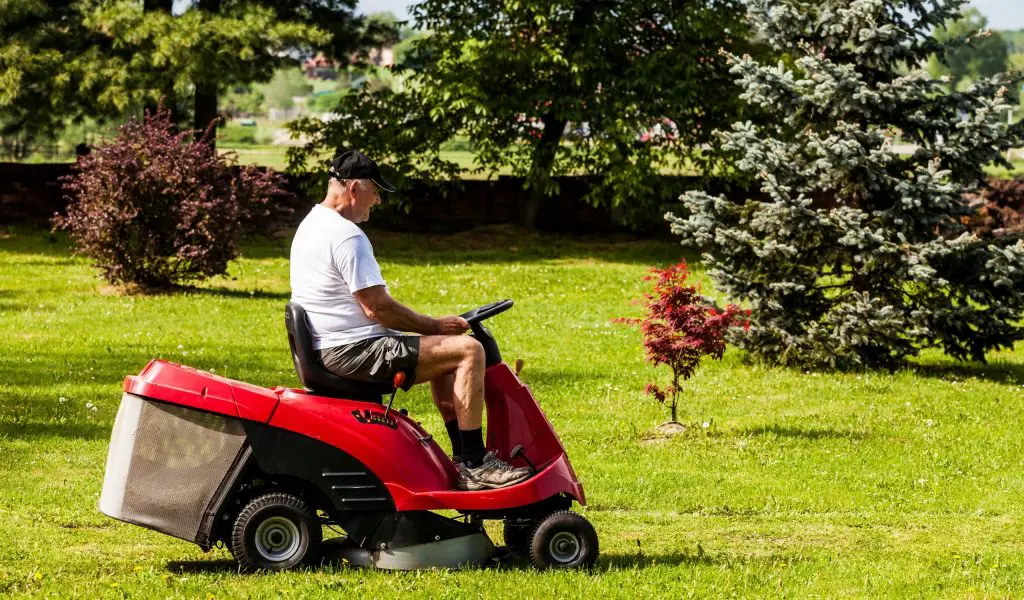
Lawn tractors
Lawn tractors are larger than standard riding mowers. They have bigger cuttings decks which reduces the time you spend on your mower.
I’d recommend a lawn tractor if you have over an acre of grass to mow.
You can get some nice conveniences like comfortable seats and cup holders. Like rear-engine riders, you get to drive with a steering wheel.
Lawn tractors are also usually fitted with scalp wheels to help prevent you from accidentally scalping your lawn on uneven terrain.
One of the main advantages of a lawn tractor is that they can be fitted with accessories to help you with tasks other than mowing the lawn.

Here are some of the accessories you can for lawn tractors:
- Spreaders – You can tow behind a spreader that can be used to spread fertilizer and other products on your lawn.
- Lawn aerators – This can be towed behind to reduce soil compaction, increase water and air flow to the root system.
- A dethatcher – can also be attached to a lawn tractor. This is to reduce lawn surface debris and thatch providing a healthy environment for new grass growth.
- Dump carts – can be used instead of a wheel barrow to transport heavy loads around your yard such as wood.
- Tow-behind lawn sweepers – can be attached to your tractor to remove debris such as leaves twigs and other debris quickly and easily.
- Dozer blades – can fit on to the front of your lawn tractor to bulldoze dirt or snow.
- Baggers – These are used to pick up grass clippings when mowing the lawn.
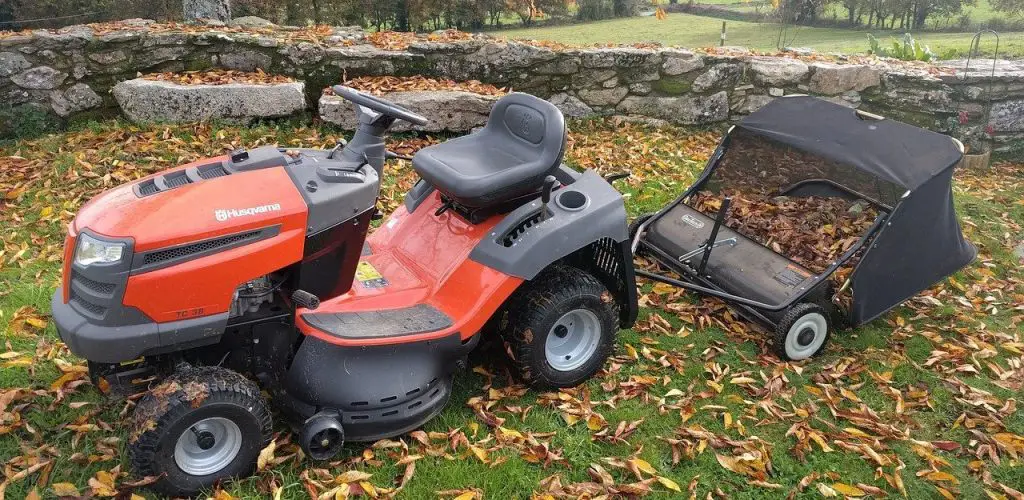
Zero turn mowers
As the name sounds, these machines have a zero-turn radius.
Zero turn mowers are much fast than your standard riding mower
They’re very speedy and highly manoeuvrable too thanks to dual transmission. You can trim really close to trees or any other obstacles in your yard which can be an absolute time saver. You won’t need to go back and trim any missed spots.
Unfortunately, these do come at a price. They’re usually several thousand dollars.
Zero turn mowers have a rear engine and rear wheel steering. You typically operate these mowers with levers that you can use to steer, accelerate and brake. They can be hard to drive at first if you’re not use to it.
They are very popular with lawn care business owners who want to maximize efficiency.
While zero turn mowers work great on flat ground, they are hard to operate on hills and can easily lose traction.

The downsides of ZTR’s and lawn tractors
- One thing to note about lawn tractors and zero turn mowers is that they usually only come with side-discharge only. If you want to bag or mulch, you’re going to make an additional investment which is certainly something to consider.
- Another consideration is that large riding mowers aren’t easy to move. You may need to invest in a trailer if you want to transport it around.
- Taking the deck off is not exactly easy so you’re probably going to want to buy a mower jack so that you can work on things underneath the mower.
- Finally, large riding mowers often require a lot of maintenance. You’re going to have to do a lot of upkeep which can be costly. For example, the tire pressure needs to be adequately maintained or you’re going to end up with an uneven cut.
Robotic lawn mowers

Robotic lawn mowers are designed for cutting the grass little and often.
The are powered by lithium ion batteries than can be charged over and over again.
You can program a robotic mower to cut the grass when you wouldn’t want to.
Here are some of the advantages of robotic lawn mowers:
- They free up your time
- They are very quiet
- Require little to no effort required to cut the grass
Robotic lawn mowers aren’t without their drawbacks though…
Disadvantages of robotic lawn mowers
- Not suitable for every yard – Some areas may need trimming manually
- They require an outside power source
- They are not cheap
Having a robot mow your grass sounds great but you’ll certainly pay for it. Robotic lawns mowers start at over $1000 which is similar to the cost of a lawn tractor.
Personally, they’re not my favorite choice. If you’re into DIY lawn care like me, you actually enjoy getting out there and cutting the grass. It really just comes down to personal preference though.
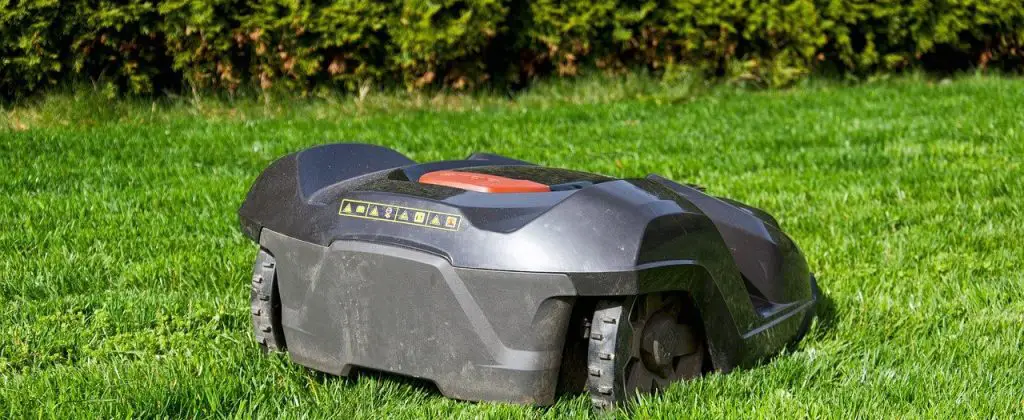
Thinking about buying a used lawn mower?
Getting a used mower can be a great way to save a lot of money if you know what to look for.
It’s a little easier to tell how much wear and tear a commercial mowers has because they usually have an hour meter.
I wouldn’t recommend getting a mower with a whole lot of hours on it. You’re much less likely to stay away from mechanical problems, costs of repair and down time.
Don’t buy anything with over 500 hours on it! I’d recommend stay in the 200-300-hour range.
If you’re just getting a lawn mower, it can be difficult to know if you’re getting good deal or not.
Before you go to inspect any mower, I’d recommend finding out what the going rate is to purchase that specific model brand new. That way you’ll be able to gauge how much you should be paying for it used by factoring in how much wear and tear the mower has.
You definitely want to make sure you’re not buying a lemon, so much sure you take it for a test drive and perform an inspection on the fundamentals.
The engine is the most important thing to pay attention to because a replacement is very expensive.
You’ll find that everyone has their own opinion about which company makes the best engines. In general, it’s best to stick to the known brands.
You can’t go wrong with Honda, Kawasaki or Briggs motors.
Here are some things to check out before you spend your hard-earned money on a used lawn mower.
Even if some of the following may not be major issues, they have the potential for added expense.
If you see some issues with a used more, it may also give you some ability to negotiate with the owner to reduce the price down.
- Look at the paint job – If the paintwork is all scratched it may be an indication that the mower has been hard worked.
- Check the pads – This gives a sign of how much general wear and tear the mower has. Torn up pads aren’t a problem but it might be an indication that other components on the mower have been used a lot.
- Look at the tire tread – If the tires are bald, it’s a good sign that the previous owner didn’t bother to take care of the mower.
- Make sure you check the oil. Pull the dip stick and make sure the oil is not black. If it’s not a diesel engine, the oil should be a nice light brown color. Black oil is a sign the mower engine has been running hot.
- Check the air filter – If the air filter is all dirty, it’s a good sign the owner hasn’t taken of the mower.
- Have a look under the mower – Look at the deck and the mowers blades. A few chips or dents won’t matter but if everything is all rusted, it’s probably best to stay away from it. There shouldn’t be any play in the blade either. If there’s any play in it at all, you might have to replace the spindle.
You can definitely save a lot of money buying a used mower – just make sure you’re getting yourself a good deal and not setting yourself up for added expense further down the road.

